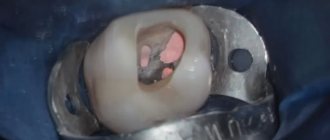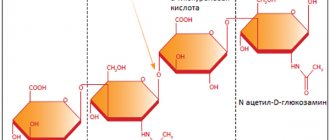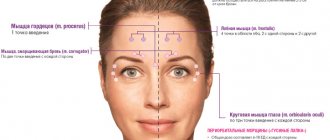Inhalation anesthesia
It is administered through an inhalation mask, so it requires special equipment - anesthesia machines that dose inhaled substances. Inhalation anesthesia agents include liquid volatile substances: ether for anesthesia, fluorotane, methoxyflurane, as well as a gaseous substance - nitrous oxide.
This type of anesthesia is a classic one, and its possible harm depends on the substance that is used to inhale the patient. Nowadays the safest substances are used in medicine. Risks are reduced to a minimum.
Treatment under anesthesia: common misconceptions
- General anesthesia drugs cause harm to the internal organs and systems of the body.
For general anesthesia, only certified drugs are used in dental medical centers. They are quickly eliminated from the body and do not have a harmful effect on the human body. Numerous clinical studies of patients treated for dental diseases under general anesthesia have not revealed any abnormalities.It is much more harmful not to treat your teeth out of fear of having to visit the dentist. A diseased tooth is a source of constant infection in the body; it is destroyed and will still have to be treated or pulled out.
- General anesthesia is addictive.
When providing dental care, narcotic analgesics are not used. Therefore, the likelihood that dependence and addiction will develop is completely excluded. - After the anesthesia ends, the patient experiences discomfort and even hallucinations.
For general anesthesia, certified medications without hallucinogenic effects are used. The likelihood of side effects when using modern drugs is minimized. However, some people may experience discomfort caused by the characteristics of the body. These include headache, body tremors, dizziness, and muscle pain.
Endotracheal anesthesia
This is the immersion of the patient into a state of deep medicated sleep, which is accompanied by complete relaxation of the muscles. A characteristic feature of this anesthesia is that the patient does not breathe on his own, so an endotracheal tube is inserted into the lumen of the trachea. In this case, narcotic anesthetics, sedatives and tranquilizers are administered intravenously to the patient, to which muscle relaxants are also added that block neuromuscular transmission.
Is this anesthesia dangerous? If anesthesia is performed by an experienced doctor, and the patient’s condition is constantly monitored, then there is no danger.
Who is indicated for general anesthesia?
Dental treatment under general anesthesia is a complex and responsible procedure. It is carried out only for medical reasons, when it is not possible to use sedation in combination with local anesthesia.
In particular, general anesthesia is used for allergic reactions to all types of local anesthetics.
The decision on the need for dental treatment under general anesthesia is made by a dentist based on the results of an examination of the oral cavity and the collected medical history. The selection of the drug for general anesthesia and the calculation of the dose are performed by an anesthesiologist-resuscitator.
Before the procedure, the patient must undergo a full medical examination, undergo tests and have an ECG. Additionally, you may need to visit specialized doctors.
Spinal anesthesia
Anesthesia is injected with a needle into the spinal cord in close proximity to the area where the surgery will be performed. This type of anesthesia is used for operations that are performed in the area below the navel. Spinal anesthesia is also used for caesarean section. The patient remains conscious, his motor activity is partially not limited, and the cardiovascular system is functioning normally. There are types of spinal anesthesia that begin to act within 5 minutes.
Is this anesthesia harmful? It is often used in obstetrics; it is recognized as the safest for children, so it is also safe for adults.
When preparing for any operation at the Sensitive clinic, a consultation with an anesthesiologist is required. The type of anesthesia is selected according to the type of operation, the characteristics of the patient, concomitant diseases, age, existing contraindications, and intolerance to certain substances are taken into account.
All types of anesthesia guarantee that the patient will not experience any pain or discomfort throughout the operation. There will be no such thing that you have to “suffer a little,” this is only possible at the moment of administration of the substance, but even this moment lasts only a few seconds.
If we turn to the history of anesthesiology, it becomes clear that this specialty began precisely with the use of inhalation anesthesia - the famous operation of W. Morton, in which he demonstrated the possibility of performing anesthesia by inhaling ethyl ether vapor. Subsequently, the properties of other inhalation agents were studied - chloroform appeared, and then halothane, which ushered in the era of halogen-containing inhalational anesthetics. It is noteworthy that all these drugs have now been replaced by more modern ones and are practically not used.
Inhalation anesthesia is a type of general anesthesia in which the state of anesthesia is achieved by inhaling inhalation agents. The mechanisms of action of inhalational anesthetics, even today, are not fully understood and are being actively studied. A number of effective and safe drugs have been developed that allow this type of anesthesia.
Inhalational general anesthesia is based on the concept of MAC - minimum alveolar concentration. MAC is a measure of the potency of an inhalational anesthetic and is defined as the minimum alveolar concentration at saturation that is sufficient to prevent 50% of patients from responding to a standard surgical stimulus (skin incision). If you graphically depict the logarithmic dependence of MAC on the fat solubility of anesthetics, you will get a straight line. This suggests that the strength of an inhalational anesthetic will directly depend on its fat solubility. In a state of saturation, the partial pressure of the anesthetic in the alveolus (PA) is in equilibrium with the partial pressure in the blood (Pa) and, accordingly, in the brain (Pb). Thus, RA may serve as an indirect indicator of its concentration in the brain. However, for many inhalational anesthetics in a real clinical situation, the process of achieving saturation-equilibrium can take several hours. The solubility coefficient “blood: gas” is a very important indicator for each anesthetic, as it reflects the rate of equalization of all three partial pressures and, accordingly, the onset of anesthesia. The less soluble the inhalational anesthetic is in the blood, the faster the leveling of PA, Pa and Pb occurs and, accordingly, the faster the state of anesthesia and recovery from it. However, the speed of onset of anesthesia is not yet the strength of the inhalational anesthetic itself, which is well demonstrated by the example with nitrous oxide - the speed of onset of anesthesia and recovery from it is very fast, but as an anesthetic, nitrous oxide is very weak (its MAC is 105).
In terms of specific drugs, the most commonly used inhalational anesthetics today are halothane, isoflurane, sevoflurane, desflurane and nitrous oxide, with halothane increasingly being phased out of routine practice due to its hapatotoxicity. Let's look at these substances in more detail.
Halothane is a classic halogen-containing agent. A strong anesthetic with a very narrow therapeutic corridor (the difference between the working and toxic concentrations is very small). A classic drug for inducing general anesthesia in children with airway obstruction, as it allows you to wake up the child when obstruction increases and minute ventilation decreases, plus, it has a fairly pleasant odor and does not irritate the airways. Halothane is quite toxic - this concerns the possible occurrence of postoperative liver dysfunction, especially against the background of other liver pathologies.
Isoflurane is an isomer of enflurane, which has a vapor pressure similar to that of halothane. It has a strong ethereal odor, which makes it unsuitable for inhalation induction. Due to the poorly studied effects on coronary blood flow, it is not recommended for use in patients with coronary artery disease, as well as in cardiac surgery, although there are publications refuting the latter statement. Reduces the metabolic needs of the brain and in a dose of 2 MAC or more can be used for the purpose of cerebroprotection during neurosurgical interventions.
Sevoflurane is a relatively new anesthetic, which a few years ago was less accessible due to its high price. Suitable for inhalation induction, as it has a fairly pleasant odor and, when used correctly, causes almost instantaneous loss of consciousness due to its relatively low solubility in the blood. More cardiostable compared to halothane and isoflurane. During deep anesthesia, it causes muscle relaxation sufficient for tracheal intubation in children. The metabolism of sevoflurane produces fluoride, which can be nephrotoxic under certain conditions.
Desflurane is similar in structure to isoflurane, but has completely different physical properties. Already at room temperature in high altitude conditions it boils, which requires the use of a special evaporator. It has low solubility in the blood (the blood:gas ratio is even lower than that of nitrous oxide), which causes a rapid onset and recovery from anesthesia. These properties make desflurane preferable for use in bariatric surgery and in patients with lipid disorders.
Advantages and disadvantages of different types of anesthesia
For each patient, the choice of anesthesia is carried out by 2 specialists - a dentist and an anesthesiologist. Doctors take into account the characteristics of the child’s body and the scope of the upcoming intervention.
Inhalation
More often in practice, inhalation mask anesthesia with the drug Sevoran is used. In dentistry, nasal masks are used that do not block access to the oral cavity. The mask method ensures quick introduction to deep anesthesia and quick awakening after the end of the intervention.
Nasopharyngeal anesthesia is used when facial surgery is performed. The anesthesia catheter is passed through the nostril into the nasopharynx.
During intubation anesthesia, the tube of the device is inserted into the trachea. The route of administration depends on the planned manipulations:
- when manipulating teeth, for free access to them, the tube passes through the nose;
- for operations on the face - through the mouth;
- for complex plastic surgeries involving the oral cavity and facial skin - through a tracheostomy (incision in the neck).
Inhalation anesthesia in dentistry has one important feature. So, with each exhalation, part of the administered drug evaporates through the mouth. For the anesthesiologist, this complicates the calculation of the required dose. The dentist's difficulties are due to the fact that in his field of activity there is an increased concentration of a narcotic substance, which he inhales along with the air.
Non-inhalation
Intravenous, intramuscular or rectal administration of a narcotic substance is used when carrying out short-term interventions. This anesthesia has a number of advantages:
- Ease of implementation.
- Ensuring unhindered penetration to any area in the oral cavity.
- Possibility of repeated administration of a narcotic drug.
However, non-inhalation anesthesia also has disadvantages - poor controllability, difficulty in calculating the dose, and the danger of asphyxia when working in the maxillofacial area.
For anesthesia in children, the intravenous anesthetic Diprivan or its analogues is usually used.
Mixed
The introduction of various anesthetics into the body by inhalation and non-inhalation methods makes it possible to achieve an optimal combination of safe doses and the required duration of narcotic influence.
Neuroleptanalgesia
This is a combined administration of drugs:
- a strong analgesic that disables pain sensitivity;
- a neuroleptic that causes an apathetic attitude towards what is happening.
Neuroleptanalgesia is used as an independent method of pain relief, and in combination with others - local anesthesia or intubation anesthesia.
Indications and contraindications
There are certain indications for the use of anesthesia. This:
- a large volume of therapeutic and surgical manipulations necessary for complete rehabilitation;
- duration and pain of the planned intervention;
- the presence of purulent processes (abscesses, phlegmon), in which local anesthesia is ineffective;
- the possibility of carrying out a complete rehabilitation in one session;
- mental characteristics of the child;
- neurological diseases;
- allergies to medications used for local anesthesia;
- pronounced gag reflex;
- bronchial asthma;
- Dental phobia - an insurmountable fear of visiting the dentist, based on previous negative experiences;
- the desire of the parents, but there must be no contraindications.
In dental practice, there are also contraindications for general anesthesia, which the doctor must take into account. These include:
- acute respiratory diseases;
- decompensated cardiovascular pathology;
- liver and kidney diseases;
- pathologies of the endocrine system;
- severe form of rickets;
- recent vaccination;
- recent food intake;
- body temperature is higher than normal.










